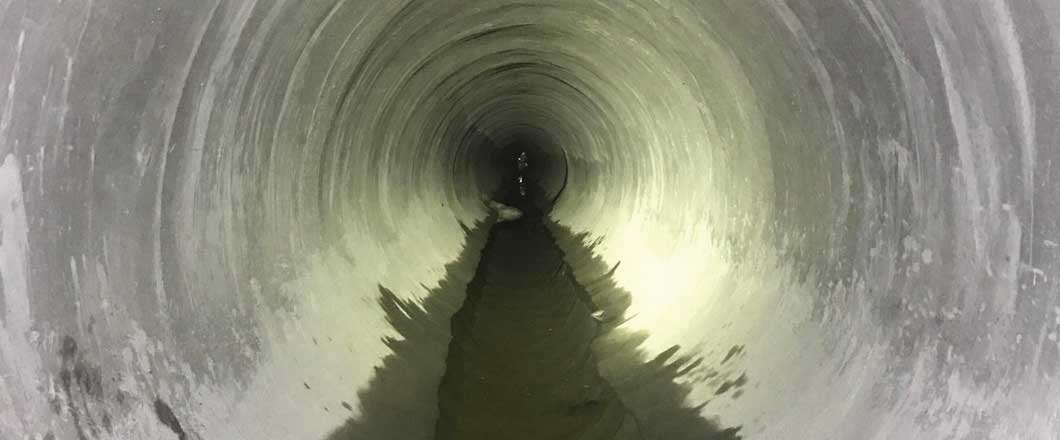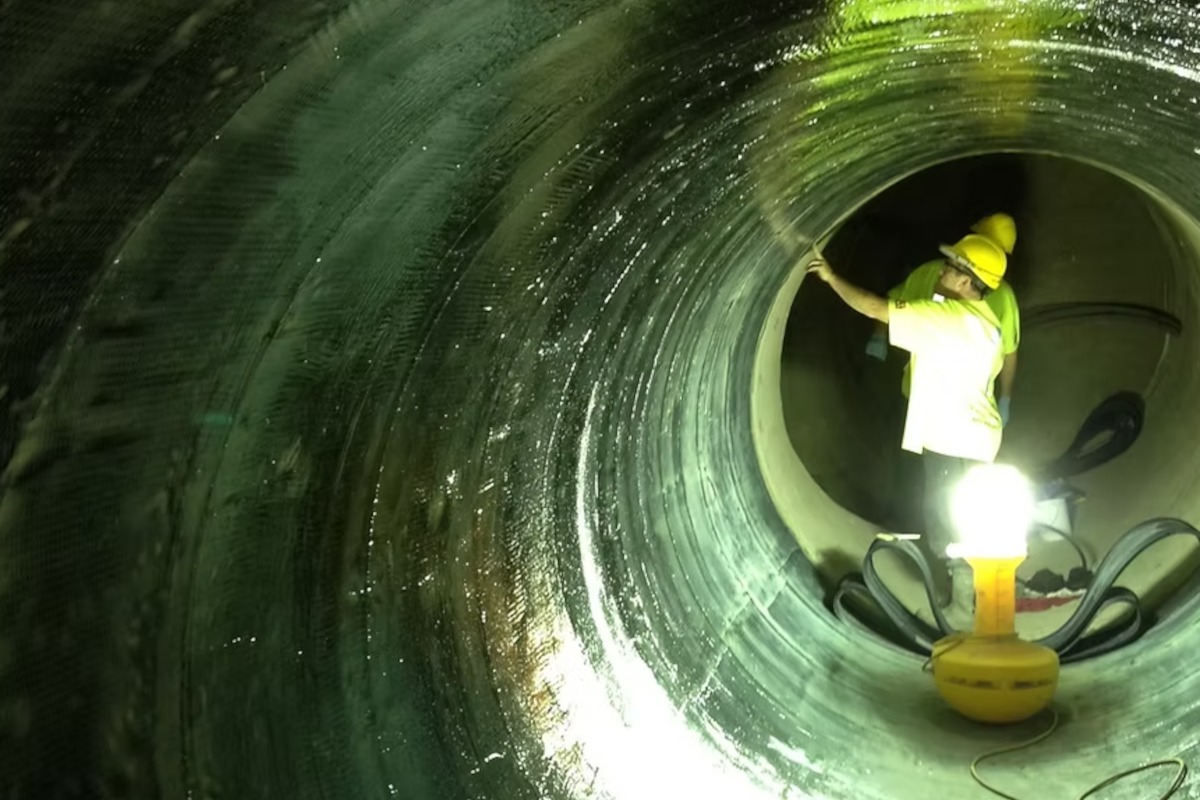
Geopolymer Pipe Rehab Keeps Major City Running Without Street, Rail Interruptions
Across the United States, aging water pipes and sewer infrastructure systems are nearing the end of their useful life. Traditional pipe repair, which involves unearthing the original lines, oftentimes is not a viable option for two primary reasons.
First, critical structures such as bridges and buildings typically exist directly above the surface, making exhuming the original pipes impossible. Second, traditional pipe rehabilitation is extremely expensive and disruptive. Geopolymer trenchless pipe repair addresses these challenges and provides municipalities with a structurally sound, cost-effective solution.
The use of geopolymers in modern industrial applications is becoming increasingly popular based on its intrinsic performance benefits, versatility and environmental impact. While traditional Portland cement relies on the hydration of calcium silicates, geopolymers form by the condensation of aluminosilicates.
It yields high early and long-term compressive strength that can match and often outperform traditional cementitious binders. GeoKrete is an ideal geopolymer material that withstands today’s harsh sewer environments. Once applied, it cures through polycondensation to form a monolithic, inorganic polymer structure that resists acidic environments as well as microbial-induced corrosion to provide longer surface durability.
Versatility is essential for rehabilitating complex urban infrastructures as different shapes, surfaces, angles and obstructions are often encountered. A geopolymer such as GeoKrete offers the application flexibility such structures demand, allowing multiple layers to be applied using spray application, spin-casting or hand troweling – or a combination of all three – to customize the repair process and achieve the desired outcome. It can easily be pumped over long distances and used in a wide range of temperatures. It can also be applied to various types of surface materials including concrete, stone, steel and plastic.
Compared to other trenchless rehabilitation systems for structural repair, geopolymers have a lower environmental impact. Certified as a Reduced Carbon Footprint product, GeoKrete’s carbon impact is 51 percent lower than Portland cement-based mortars and 59 percent lower than calcium aluminate cement-based mortars.
As communities seek to repair their aging infrastructures, it’s clear geopolymer materials are a compelling option that enable municipalities to modernize their large diameter pipelines with greater ease – and affordability.
RELATED: Geopolymer Lining Used for Kentucky Combined Sewer System
Challenges in Houston
The City of Houston boasts one of the largest and most complex wastewater systems in the nation, with more than 6,000 miles of wastewater lines, 390 lift stations and 39 wastewater treatment plants. During an inspection, the city discovered 5,700 lf of a 60-in. reinforced concrete pipe (RCP) was highly compromised.
This section of sewer system infrastructure, positioned below a crucial segment of a major artery running through downtown, suffered from severe inflow and infiltration (I&I) caused by corroded sections of pipe, soil shift-induced off-set joints, leaking joints from laterals and invert pipes inside manholes. The degradation not only increased water treatment costs but also increased the roadway’s risk of sinkholes and potential collapse.
Additionally, the City’s 23-mile light rail system ran along this important street, with several manholes positioned between the tracks. Given the vast number of residents – and businesses – that relied upon this mode of transportation, the City was challenged to determine how to repair more than a mile of large diameter RCP without closing the road or light rail line.
Vortex Companies helped the city prepare a comprehensive rehabilitation plan to avoid disrupting traffic or light rail service.

Over a mile of heavily corroded and leaking 60-in. reinforced concrete pipe running beneath Houston’s light rail system was identified for rehabilitation by the City of Houston.
The Geopolymer Solution
A spin-cast geopolymer lining was selected over cured-in-place pipe (CIPP) lining due to the geopolymer’s structural strength, excellent corrosion resistance, cost and ability to be spray-applied to round and non-round structures to cover obstructions as well as perform patches and repairs.
The Quadex Lining System (QLS) was used to spin-cast GeoKrete geopolymer to a 1.5-in. design thickness the full length of the RCP. Spray application enabled GeoKrete to be applied strategically, providing full structural rehabilitation and corrosion resistance on-time and on-budget without road or light rail closures.
“The City of Houston, the fourth largest city in the USA, provides high-quality water and wastewater service to over 2.3 million customers daily and is the largest water/wastewater utility in Texas,” says Jack Canfield, assistant director, Wastewater Operations Branch, Houston Public Works. The city appreciates and embraces the advances in trenchless rehabilitation, such as spin-cast structural rehabilitation, to cost-effectively, efficiently and expeditiously renew the large diameter sanitary sewers.”
RELATED: Spray-Applied Lining Systems Address Unique Infrastructure Problems
The City’s experience demonstrates the power, practicality and versatility of geopolymer trenchless pipe repair. Geopolymer materials and their inherent flexibility are ideal to restore structural integrity to large diameter pipes, culverts, tunnels, and other raw storm and wastewater infrastructure.
“The City of Houston uses spin-cast geopolymer as an alternative rehabilitation method for large diameter sewer pipes when there is limited access for heavily deteriorated and odd-shape trunk lines,” says explained David Tajadod, managing engineer, Wastewater Operations Branch, Houston Public Works. “This gives us an immediate solution in lieu of using traditional rehabilitation methods.”
Geopolymer mortars are the future of spray-applied structural coatings and are designed to perform where traditional cements and expensive composite systems (cement+epoxy) fall short. Geopolymers offer full structural repair, exceptional bonding properties and ideal conditions for precision mixing, pumping and spraying while providing the added advantages of significantly reduced greenhouse emissions, increased fire and chemical resistance, and reduced water utilization.
As cities embark on restoring large diameter pipes across their communities, geopolymers warrant consideration as a preferred material of choice.
Ryan Graham is a senior vice president, sales with the Vortex Companies.




